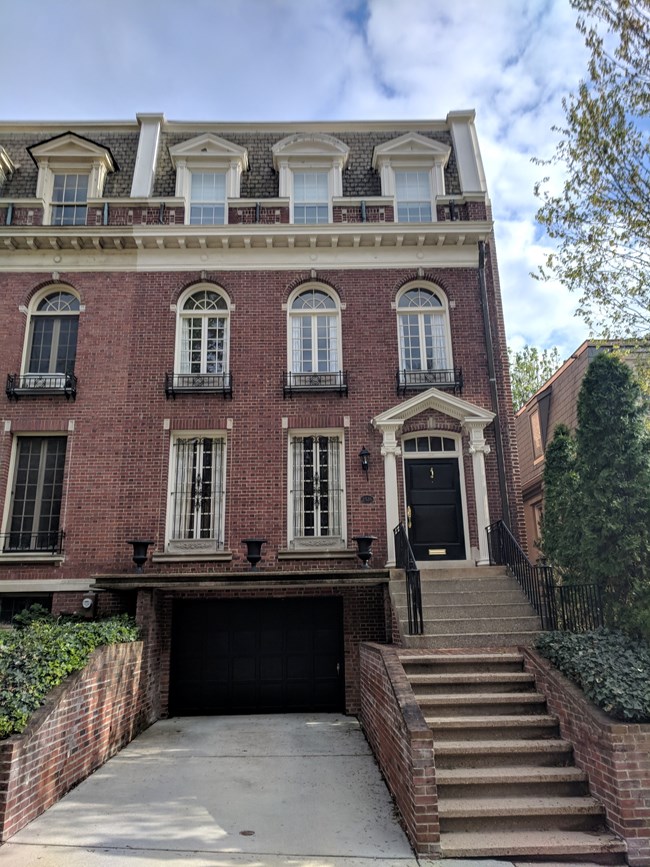Last updated: June 26, 2018
Thing to Do
Tour the Woodrow Wilson House

Wilson’s wives were also important in bringing greater awareness about social issues of the day. His first wife Ellen supported efforts to improve housing in Washington, DC until her death in 1914. Wilson remarried in 1915 to Edith Bolling Galt. She was instrumental in preserving Wilson’s house, his personal effects, and his library.
After he completed his second term in office in 1921, Wilson retired to his home located on the northwestern side of Washington, DC at 2340 S Street, NW. Wilson died in 1924 and was laid to rest in Washington National Cathedral. Edith outlived her husband and before she died in 1961, she donated their house and furnishings to the National Trust for Historic Preservation. The Trust opened the Woodrow Wilson House to the public in 1963. Edith Wilson also donated her husband's personal papers to the Library of Congress.
Today, visitors can take guided tours of the home and see many of the objects that once belonged to the 28th president.

Photo taken by Lauren Rever.
Explore More!
Two blocks from the President Woodrow Wilson House sits the former residence of Frances Perkins. While serving as Secretary of Labor from 1933–1945, Perkins lived in this Colonial Revival townhouse.
Born in 1880 in Massachusetts, Perkins became passionate about workers rights after she attended Mount Holyoke College. At this time, it was unusual for women to receive an advanced education and Perkins used her knowledge to obtain work as a teacher, a social worker, and eventually an advocate for workers rights.
While living in New York, she was appointed the Commissioner of the New York State Department of Labor by the governor, Franklin Delano Roosevelt. When Roosevelt was elected President of the United States in 1932, he appointed Perkins the Secretary of the Department of Labor.
Perkins became the first woman to hold a cabinet position. She worked with President Roosevelt to enact social welfare programs as part of the New Deal, including the Social Security Act and the Fair Labor Standards Act. She also led efforts to eliminate child labor and establish a minimum wage.
Due to the significance of her contributions to American history, Perkins' house at 2326 California Street NW was designated a National Historic Landmark in 1991.
Sources:
Downey, Kristin. The Woman Behind the New Deal: The Life of Frances Perkins, FDR’s Secretary of Labor and his Moral Conscience. New York: The DoubleDay Publishing Group, 2009.
Pasachoff, Naomi. Frances Perkins: Champion of the New Deal. New York: Oxford University Press, 1999.
